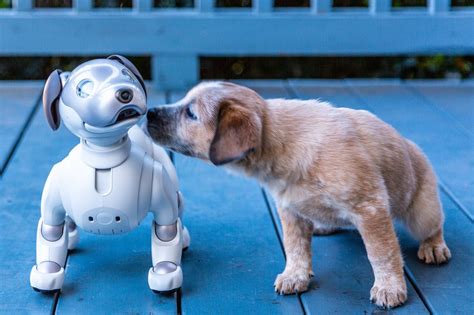Introduction
Artificial intelligence (AI) robot pets are becoming increasingly popular as advancements in technology make them more lifelike and interactive. These pets offer companionship, entertainment, and education, making them an attractive alternative to traditional pets. One of the key aspects of designing an AI robot pet is choosing the right color scheme and branding. This article provides a comprehensive guide to AI robot pet color schemes and branding, discussing factors to consider, best practices, and tips for creating a strong and memorable brand.

Factors to Consider When Choosing a Color Scheme
When selecting a color scheme for your AI robot pet, there are several factors to consider:
- Target audience: The age, gender, and interests of your target audience will influence the most suitable color palette.
- Personality: The colors you choose should reflect the personality you want to convey for your pet. For example, warm colors like red and orange may suggest energy and enthusiasm, while cool colors like blue and green may evoke calmness and tranquility.
- Brand identity: The color scheme should align with the overall brand identity you want to establish for your pet. This includes the name, logo, and any associated marketing materials.
- Competition: Research the color schemes used by competing AI robot pets to identify opportunities to differentiate your product.
- Cultural associations: Different colors have different cultural associations. For example, red is often associated with passion in Western cultures but with good luck in Chinese culture.
Best Practices for Branding AI Robot Pets
In addition to choosing a color scheme, establishing a strong brand for your AI robot pet is crucial. Here are some best practices to consider:
- Create a memorable logo: The logo is the visual representation of your brand. It should be simple, recognizable, and relevant to the product.
- Develop a brand voice: The brand voice is the personality of your brand. It influences the tone and language used in all communications, including marketing materials, social media posts, and customer service interactions.
- Build a consistent brand experience: Ensure consistency across all brand touchpoints, including the product design, packaging, website, and social media presence.
- Leverage social media: Social media is a powerful tool for building brand awareness and engaging with potential customers. Share engaging content, respond to inquiries, and run targeted ads.
- Monitor brand reputation: Regularly track customer feedback and online mentions of your brand to identify areas for improvement.
Tips and Tricks
Here are some additional tips and tricks for enhancing the color scheme and branding of your AI robot pet:
- Use complementary colors: Combining complementary colors creates a visually appealing contrast. For example, blue and orange or red and green.
- Experiment with gradients: Gradients can add depth and interest to your color scheme.
- Consider the lighting: The lighting conditions in which your pet will be used can affect the perceived colors. Test the color scheme under different lighting scenarios.
- Seek feedback from others: Get feedback from friends, family, or potential customers to gather insights on the effectiveness of your color scheme and branding.
- Stay up-to-date: The world of branding is constantly evolving. Stay informed about the latest trends and innovations in color theory and brand strategy.
How-To: Step-by-Step Approach to Brand Development
- Define your target audience: Determine the age, gender, interests, and demographics of your target audience.
- Establish a brand identity: Develop a brand name, logo, color scheme, and brand voice that reflect the personality and values of your pet.
- Create marketing materials: Design marketing materials that showcase your pet’s features and benefits, using the established color scheme and brand identity.
- Launch your product: Introduce your AI robot pet to the market through various channels, including online marketplaces, retail stores, and social media.
- Monitor and adjust: Track customer feedback and industry trends to make adjustments to your branding strategy as needed.
Case Detail: Comparison of Color Schemes in AI Robot Pets
Table 1: AI Robot Pet Color Scheme Comparison
| Robot Pet | Primary Color | Secondary Colors | Target Audience |
|---|---|---|---|
| PetPal 1000 | Vibrant Blue | Yellow and Green | Children Ages 3-8 |
| CompanionBot 2000 | Soothing Lavender | White and Gray | Elderly Adults |
| MindMate 3000 | Energetic Red | Black and Silver | Young Adults |
Market Insights
- According to a study by the International Federation of Robotics (IFR), the global market for personal service robots, including AI robot pets, is projected to reach $35 billion by 2025.
- Research from the University of California, San Diego suggests that AI robot pets can provide therapeutic benefits to individuals with loneliness, anxiety, and depression.
- A survey by the American Pet Products Association (APPA) found that 67% of pet owners consider their pets to be part of their family.
Conclusion
Creating an effective color scheme and branding strategy is crucial for the success of any AI robot pet. By considering the factors outlined in this guide and implementing the best practices and tips provided, you can develop a strong and memorable brand that resonates with your target audience. With advancements in AI technology and the growing demand for companionship and entertainment, the future of AI robot pets looks promising.





















